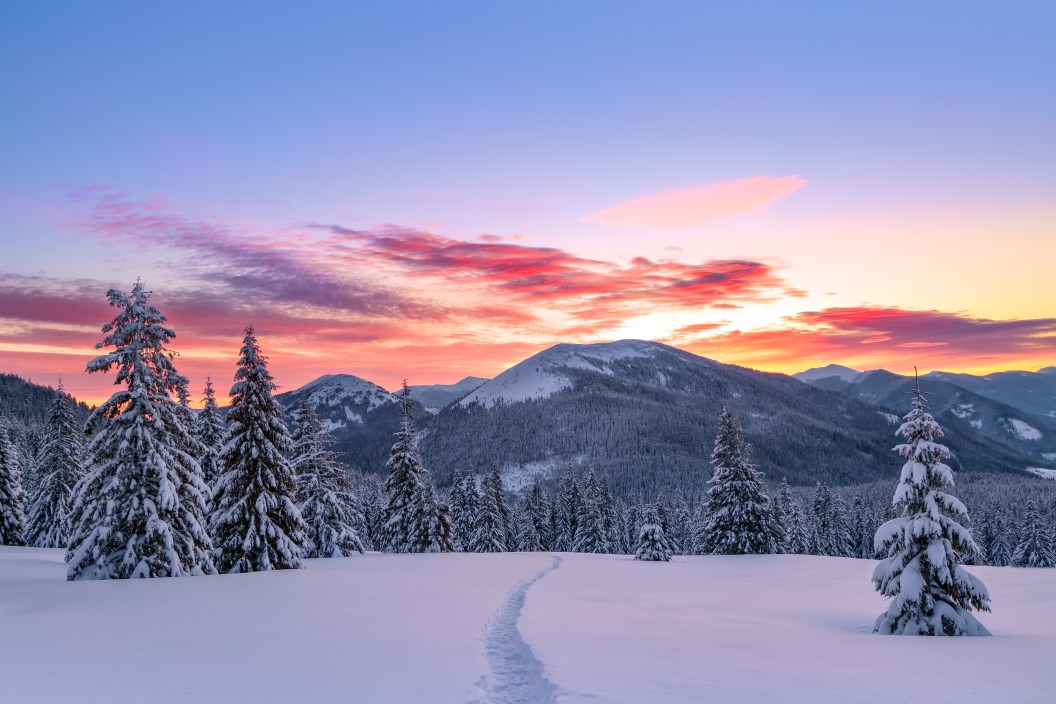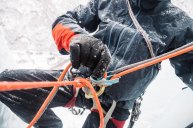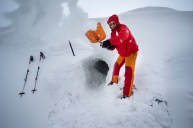In my opinion, winter is the best season of the year to get outside: There's ice fishing to be had, snowmobile trips to go on, and mountain trails just begging to be snowshoed. The winter hunting where I live in Alaska is some of my favorite; the deer in Prince William Sound have moved down to the beaches, the caribou are even tastier now that they're not in the rut, and the ptarmigan are perching on every willow in sight.
However, getting into the backcountry in the winter comes with additional risks. While getting lost or stuck outside can be a sticky situation in any season, it can quickly turn into a life-or-death one in the winter. Snowy terrain saps your energy and can make it hard to find your way, and cold temperatures can lead to hypothermia and frostbite. To recreate safely in the winter, you must know how to survive if you get stuck out in the cold.
As a mountain guide working on the glaciers of Alaska, I experience wintry conditions just about year-round. I've been caught in my fair share of ugly storms and my winter survival experience is hard-won. Here are my best survival tips on what to do if you get stranded in the cold.
The Best Intervention Is Prevention
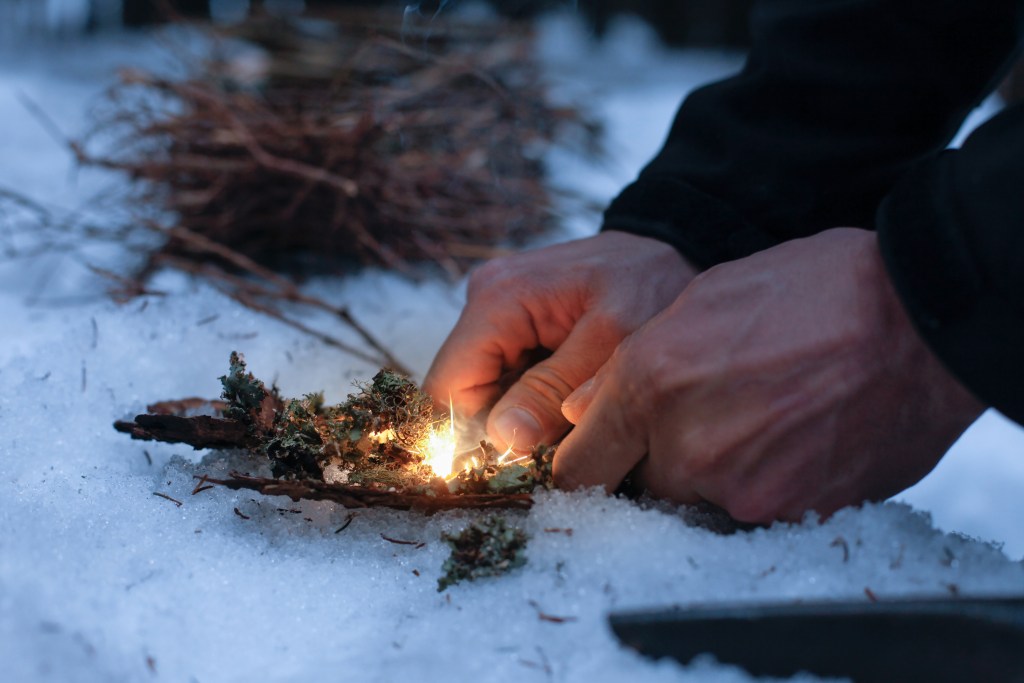
Getty Images, zlikovec
The best way to survive getting caught outside is to not get caught outside in the first place. In my experience, most rescue situations are, at least in part, caused by what we call "user error"—the people involved either didn't carry the right gear, made bad choices, or didn't have the right education for the situation they were in and found themselves needing help.
Playing in the cold and in snowy conditions requires a little more forethought than heading into the backcountry in milder weather. Make sure you take all of the necessary steps needed to stay safe before you even step foot outside.
Carry the Proper Gear
Winter recreation is far more gear-intensive than summer recreation. Before heading out to the backcountry, make sure you have everything you need. This includes proper winter layers to deal with any weather conditions as well as winter survival gear, including a headlamp, flotation devices like snowshoes or skis for deep snow, and ample water in a vessel that won't freeze.
In addition, your body burns far more calories to stay warm and move through snow than it does to regulate your temperature in warmer weather and when traversing packed terrain, so bring more calorie-dense food, and more of it, than you think you'll need. You should also consider packing a satellite communication device like a Garmin InReach Mini 2 if you'll be traveling outside of cell phone range.
If you're heading out on a particularly long day or in bad conditions, it's wise to bring along a light winter shelter such as the Black Diamond Mega Light Tent and a winter sleeping bag like the Bishop Pass Gore-Tex 0F sleeping bag. Both add less than 10 pounds to your pack and could very well save your life if you end up unintentionally benighted.
Lastly, if you are going to be in an area with trees or wood, bring a fire starter kit if you need to stay warm and/or start a signal fire.
Look at the Weather Forecast
Take a look at the weather forecast and make sure you are prepared for the predictions, be it a snowstorm, frigid temperatures, or a sunny, bluebird day. Be flexible enough to change your plans if the weather is calling for conditions that are outside your comfort zone. If you'll be headed into steep, snowy terrain, check out the avalanche forecast for the area, too.
Be Smart About Your Route
To avoid getting lost, make sure you have mapped out your route and any alternate routes you may take if something goes awry. Download maps onto your phone through apps like Gaia GPS or onX Maps and carry hard copies of maps and a compass as well.
Also essential: Tell someone where you're going, when they can expect to hear from you, and who they should contact if they don't hear from you by a certain time.
Get the Right Winter Education
Nonprofits like the Appalachian Mountain Club, professional guiding organizations like Northeast Mountaineering, and even retail stores like REI offer outdoor education courses to teach you what to do when things start going south in the backcountry.
If you plan to spend a lot of time outside this winter in general, consider taking a wilderness first responder course like the ones offered by NOLS. You'll learn how to handle medical emergencies and trauma in the backcountry, no matter the season. If you'll be spending a lot of time in steep, snowy mountains, you should consider taking an avalanche education and rescue course, like those offered by AIARE.
What to Do If You Get Stuck Outside in Winter
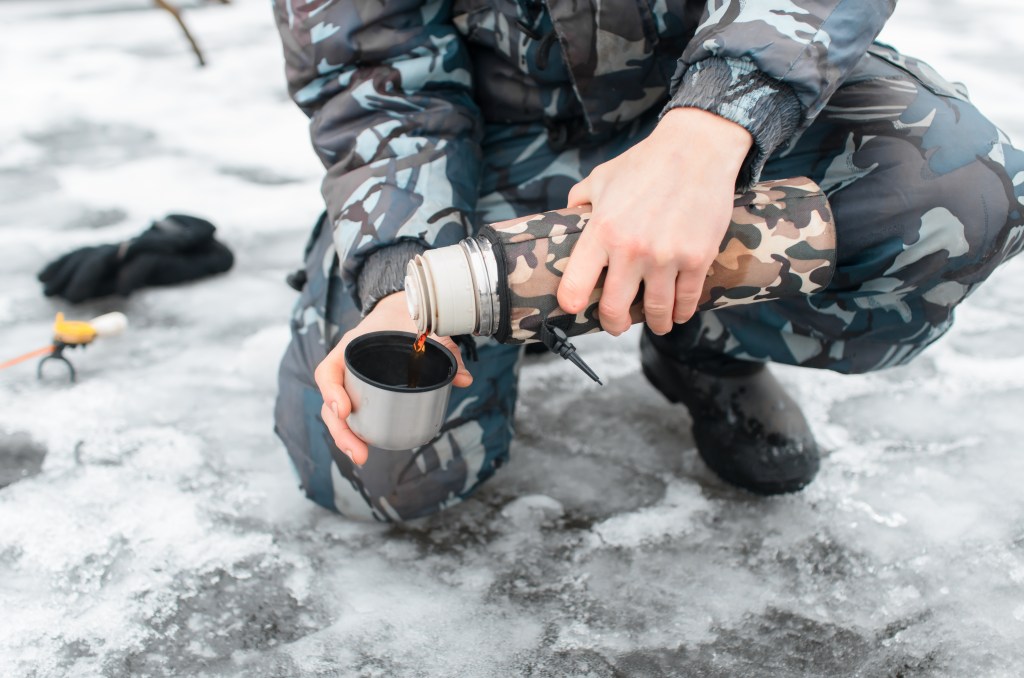
Getty Images, Sergey Dementyev
Stay Calm and Don't Wander
The cardinal rule if you get lost is to stay calm and to stay put. Panicking greatly reduces your ability to think critically, and you'll need every last brain cell to get yourself back on track. If you're in deep snow, you can often simply follow your tracks back to the last place you recognize and await help.
But if you've gotten yourself truly turned around, the best solution is to stay where you are. Wandering around in the snow only tires you out and, potentially, makes you more lost. Call for rescue on your satellite communication device if you have one. If you don't, hunker down until the person who knows where you've gone and what time you were expected back hasn't heard from you, and await rescue when you're overdue. You can also use your headlamp to signal for help or, in a worst-case scenario, light a fire to draw attention to yourself.
Stay Warm
Staying warm shouldn't be too difficult if you bring the right layers for the weather. Stay on top of it and put on layers even before you feel they're needed; it's easier for your body to stay warm than it is to re-warm, and there's no sense in trying to tough it out. Keep your mittens and hat on at all times and all of your layers zipped up to your neck to avoid drafts. If you're still feeling cold, move around a little to raise your body temperature. Do pushups or jumping jacks, or find a hill to walk up. Just make sure you don't exert so much that you sweat, as the dampness leaves you colder than before, and that you don't burn too much energy—you may need it later.
Stay Fueled and Hydrated
Your body needs calories to stay warm, so make sure you're taking in plenty of calorie-dense snacks. And, even though you may not be sweating as much as in the summer, dehydration is incredibly common in winter and increases the chances of frostbite and hypothermia. Drink plenty of water, but don't eat snow or ice as it will lower your core body temperature. If you run out of water, put some snow or ice into your water bottle and then tuck it into your jacket to melt.
Find or Build Shelter
If it seems like you could be stuck for a while or if conditions are worsening, you'll need shelter. You might be able to find a large rock, downed tree, or a tree well to crawl under, but your best bet may be to make a shelter for yourself. The easiest way to do so is to find a large drift or bank of snow and dig a cave into it. You can also build igloos or quinzee huts or, if you're in a treed area, a lean-to.
Brush up on some common shelter-building techniques before you head out; there are numerous tutorials online, and they're easy (and fun) to practice in your backyard if you have some snow. I build a quinzee hut in my backyard most winters for practice, and it makes for a great cocktail hour space when I have friends over.
If you have to spend the night, sleep on top of your backpack, or use evergreen boughs or leaves to make a thin sleeping pad. Sleeping on the bare, frozen ground saps body heat.
Wait for Help
To quote Tom Petty, the waiting is the hardest part. Depending on how remote you are, as well as the weather conditions, it can take search and rescue hours to reach you, even if you were able to place a distress call on a satellite device.
As tempting as it may be to self-rescue and try to find your own way out, don't do it. So many rescues have only gotten more complicated because the victims have left the place they were supposed to be by the time rescuers reach it.
If it's getting late, you may have to hunker down for the night. If you haven't built a snow shelter, try to find a tree or a rock outcropping nearby to shelter you from any wind or storm. If you've brought fire-starting materials and there's wood handy, make a fire to stay warm and to indicate your location to rescue helicopters overhead. If you aren't able to make a fire, lie on top of and cover yourself with evergreen branches if they're available; they'll give you some extra insulation from the cold and may help you stand out from the snow around you. Otherwise, layer up and stay hydrated and fueled. Rescue will hopefully come soon!
READ MORE: Backcountry Gear That'll Keep You Alive This Winter
